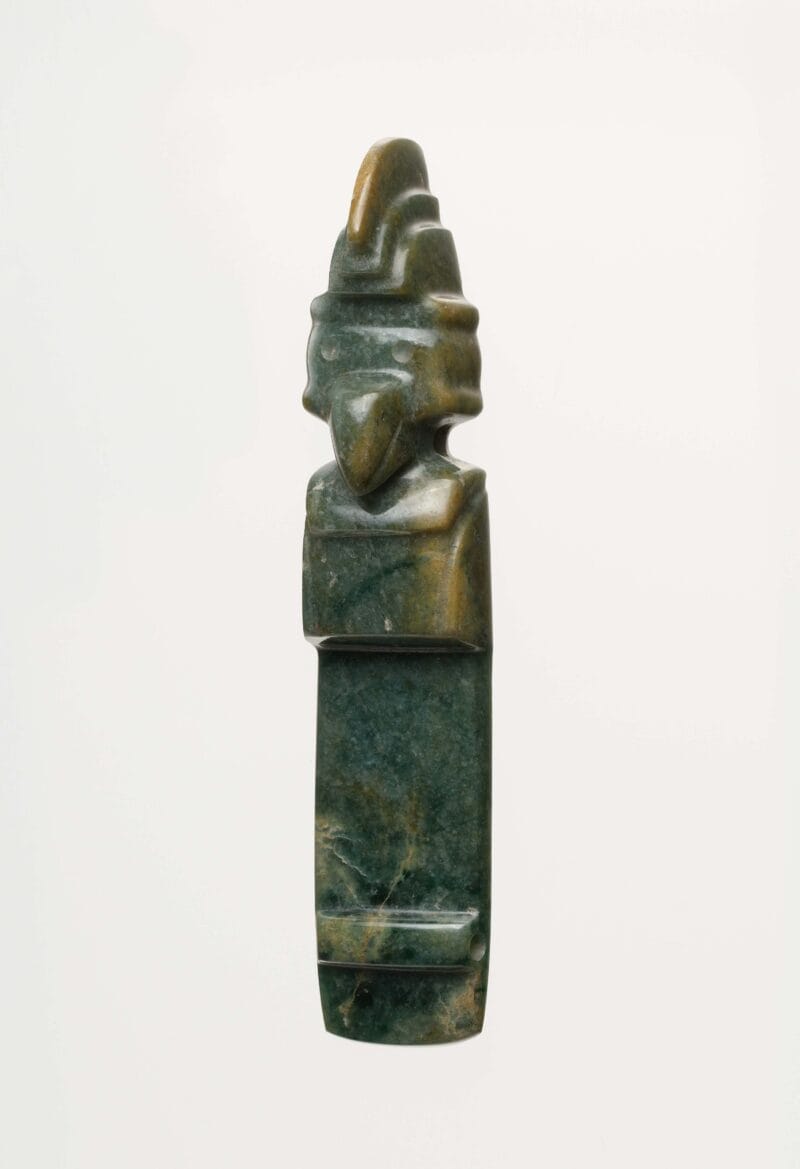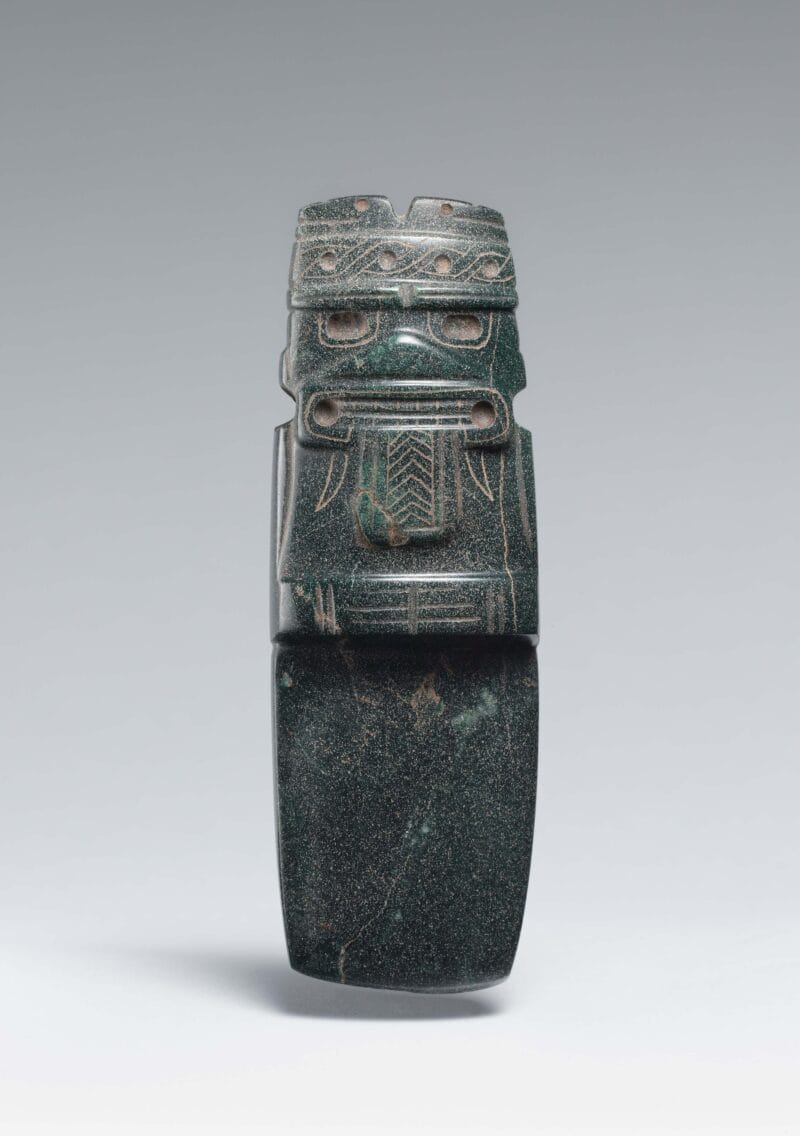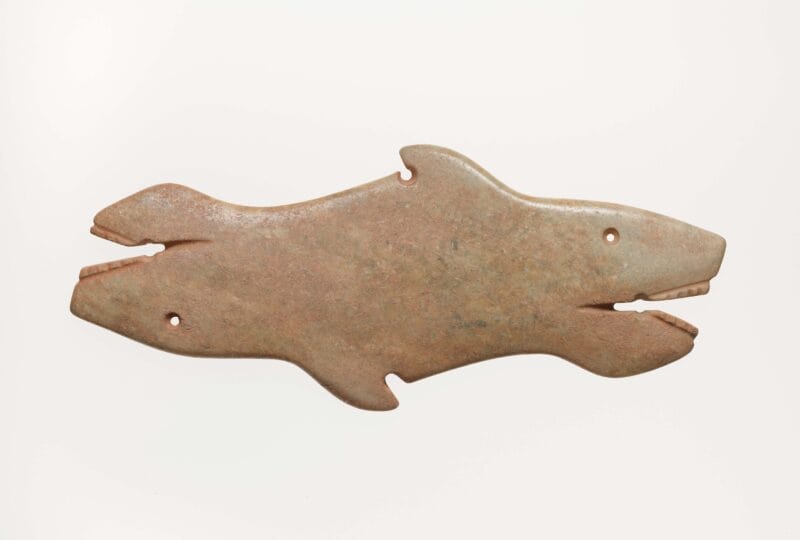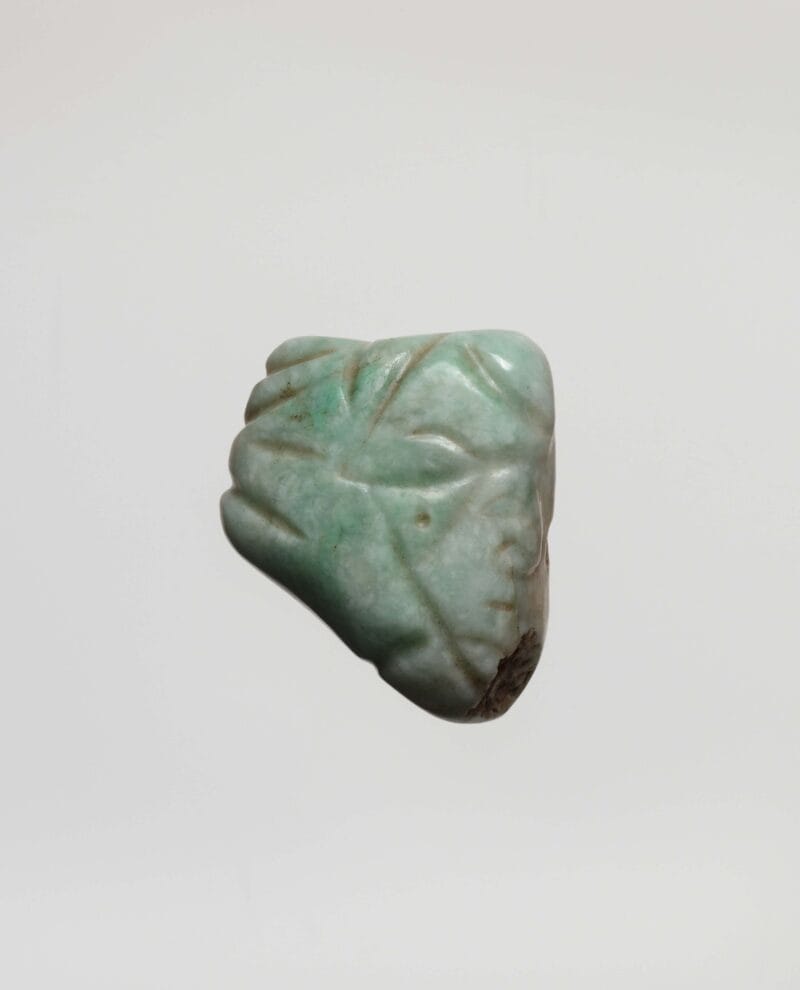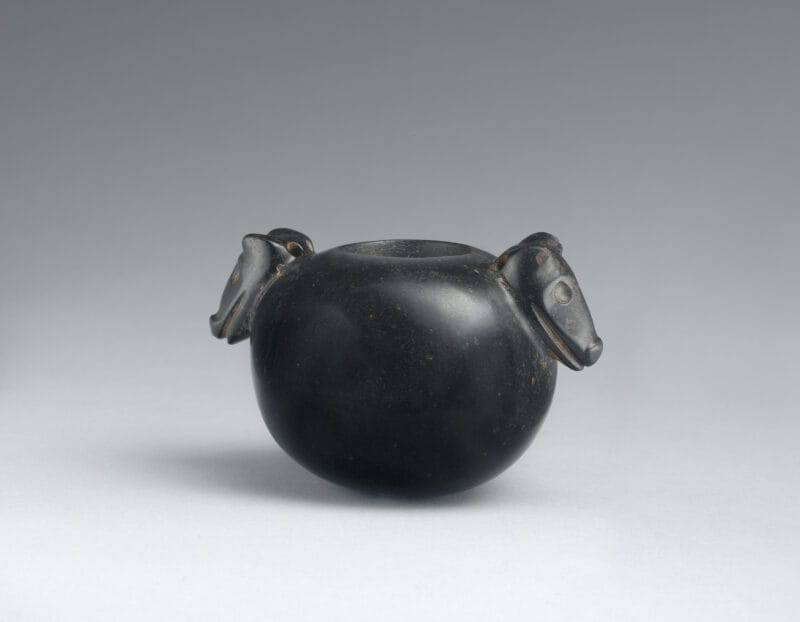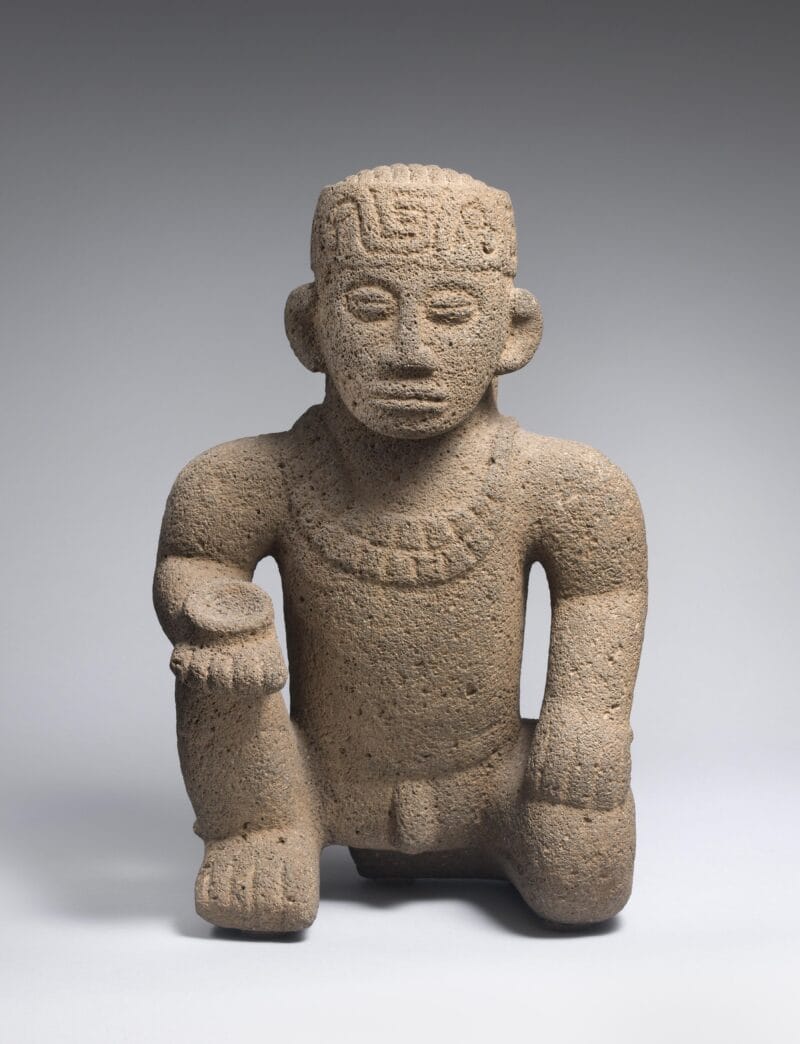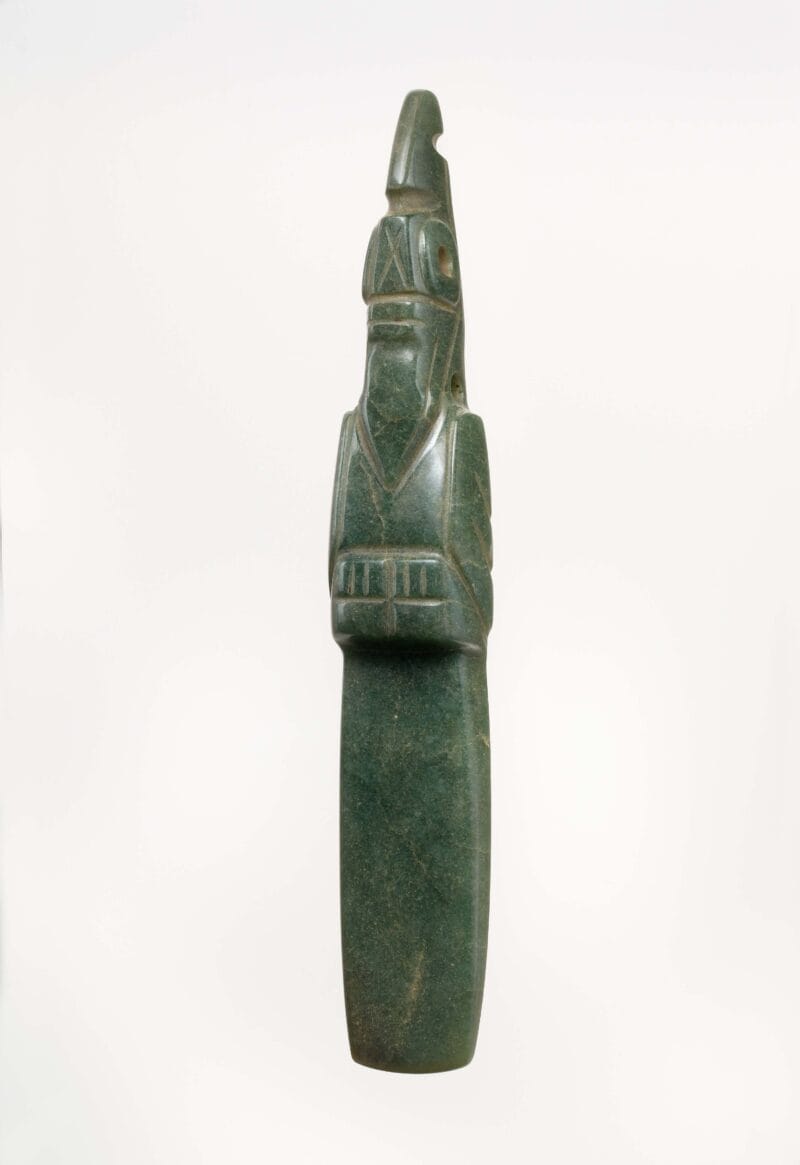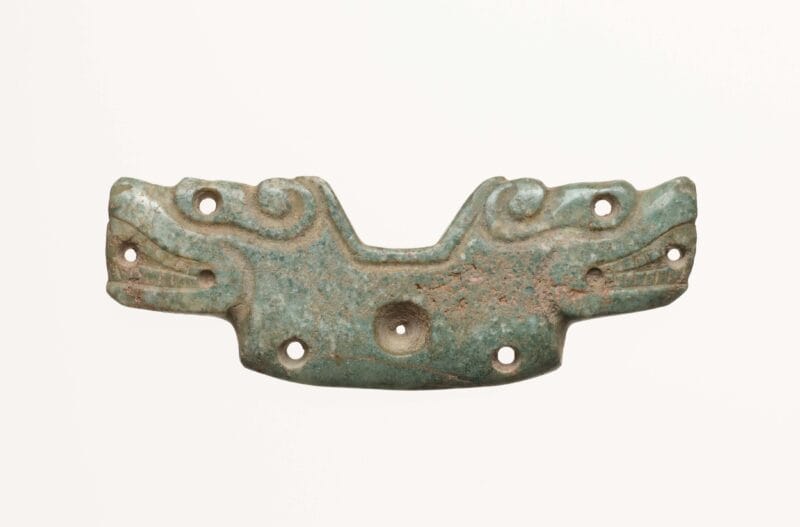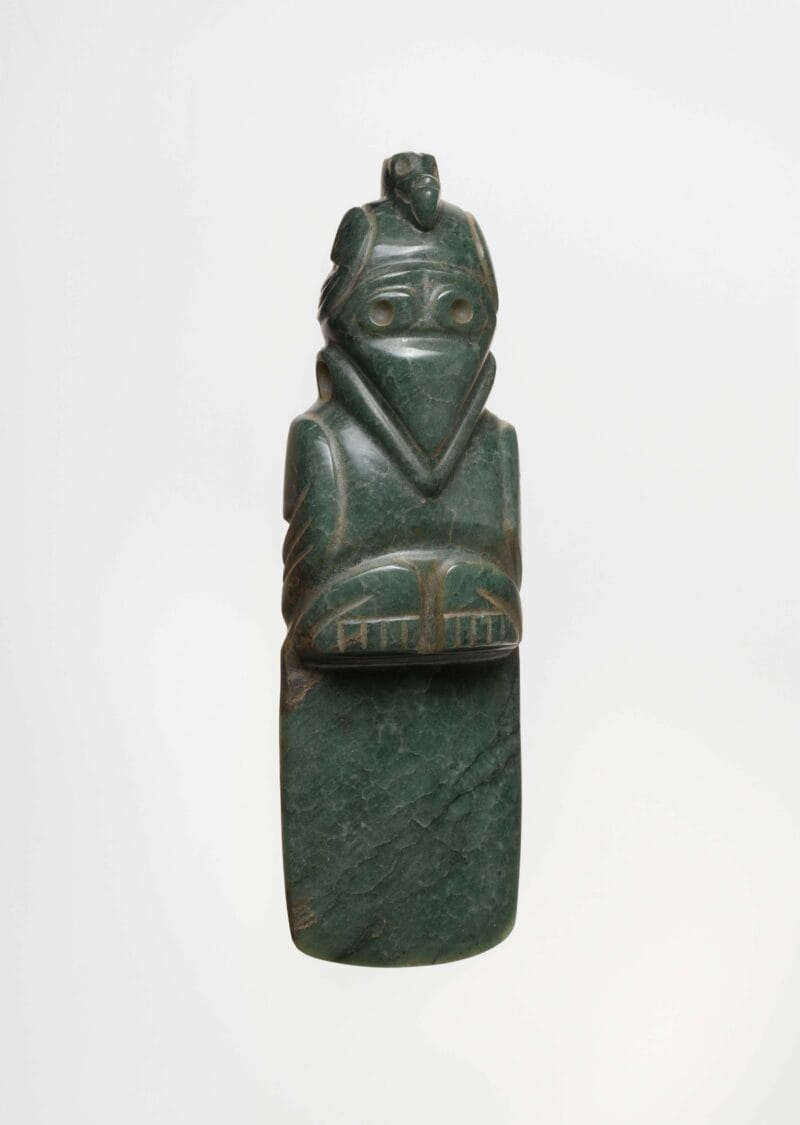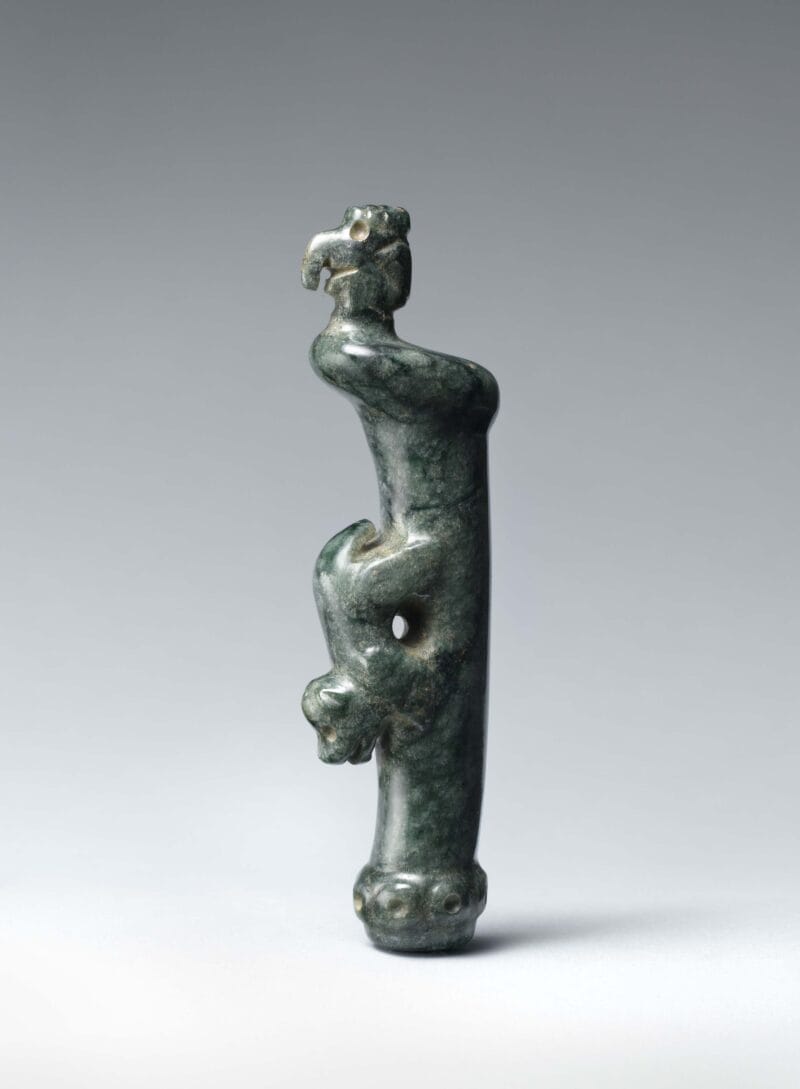
About the Object
Archaeologists have found numerous Costa Rican jade celts, or “axe-gods,” featuring depictions of avian (bird), canine (dog), and human figures with similar traits to this object. Notably, this particular work depicts bird and dog features along a central column that perhaps represents a tree. Among ancient Costa Ricans, birds were understood to be able to communicate with both earthly and heavenly individuals, while dogs generally were thought to guide the deceased on their path to the underworld (a belief shared by many other Mesoamerican traditions such as the Maya and other peoples in areas such as ancient Guatemala). The combination of both canine and avian figures strongly suggests the religious and ceremonial functions of this particular type of axe-god ornament unique to Costa Rica. Typically, such pendants would be worn as a necklace by inserting string through the drilled holes on each side of the object.
Additional Information
The Intermediate or Isthmian archaeological regions cover a zone stretching from roughly what is now southern Mexico to Venezuela and Ecuador, areas vital for the transmission of materials, peoples, and concepts between these two major hearths of pre-colonial civilizations of the Americas. Ancient Costa Rican communities possibly connected jade to symbols of fertility. Given the symbolic importance and value placed on this kind of material, jade axe-god pendants were most commonly found in burial sites of likely wealthy community members or dignitaries.
Spencer Throckmorton Collection, New York, NY;
Gift to The Jan T. and Marica Vilcek Collection, 2005-2010;
Gift to The Vilcek Foundation, 2010;
Related Objects
You may also be interested in
Juan Pablo Contreras composes classical music with the sounds of Mexico

Alejandro Sánchez Alvarado: “Making the improbable possible”

Felipe Baeza

